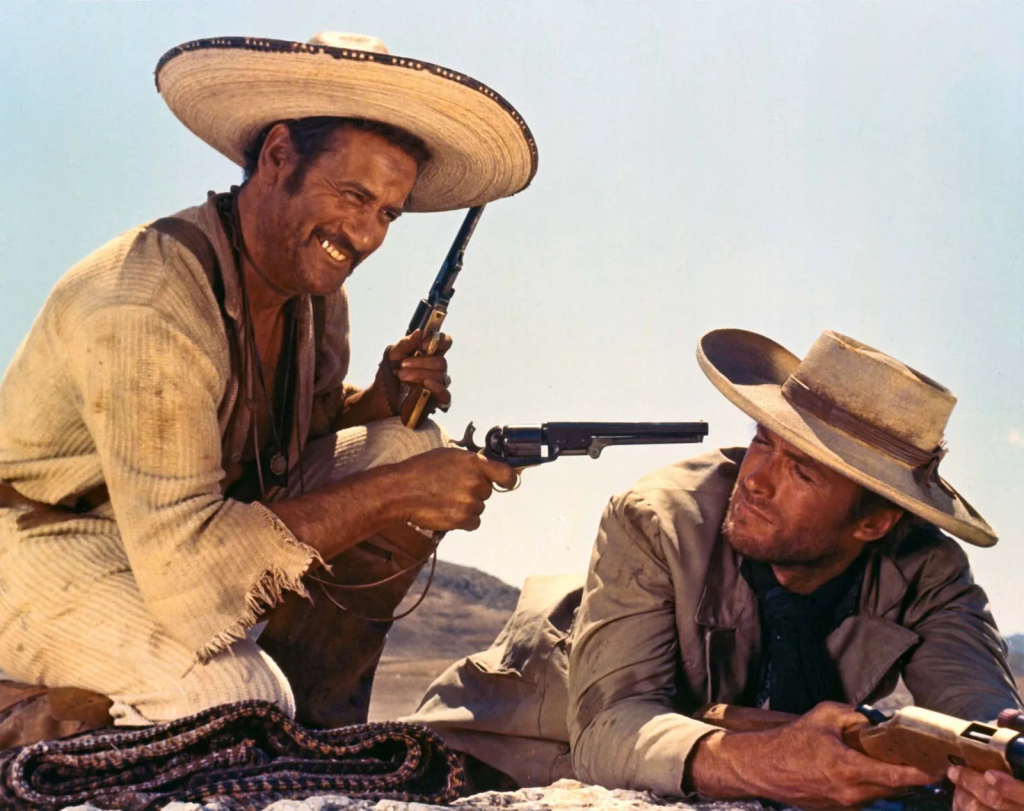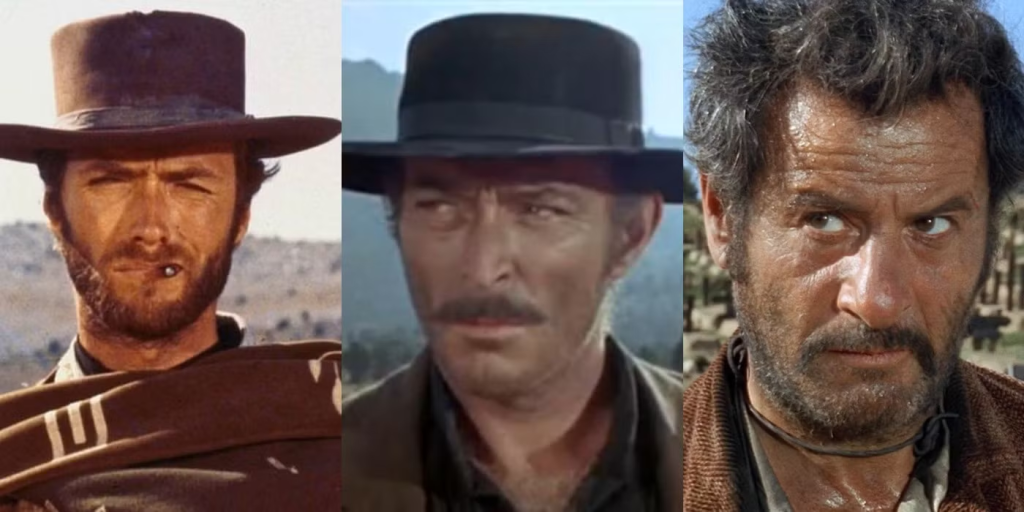The Good, the Bad and the Ugly (2025) is a bold, stylized reimagining of Sergio Leone’s legendary 1966 Spaghetti Western. Rather than a simple remake, this modern adaptation retains the essence of the original—three morally ambiguous gunslingers hunting buried gold during wartime—while transplanting the story into a gritty, dystopian near-future ravaged by collapse and conflict.
Set in a war-torn wasteland resembling a fractured post-American frontier, the film follows three rival antiheroes: “Blondie” (The Good), a quiet but deadly marksman with his own code of honor; “Angel Eyes” (The Bad), a ruthless bounty hunter who leaves carnage in his wake; and “Tuco” (The Ugly), a volatile outlaw with a tragic past and a sharp tongue. Each man is pursuing a cache of hidden wealth—once Confederate gold, now reimagined as a stash of cryptocurrency hard drives locked in a forgotten vault buried beneath a ruined stronghold.

The story unfolds with sharp tension and bursts of brutal violence, as shifting alliances and betrayals define the trio’s uneasy relationship. Blondie and Tuco, again forced into a reluctant partnership, clash constantly in both wit and bullets, while Angel Eyes stalks them across a ruined landscape ruled by mercenaries, warlords, and corrupted remnants of government.

Despite the futuristic setting, the film stays true to the original’s themes of greed, survival, and the blurred lines between morality and lawlessness. The wasteland itself becomes a character—harsh, desolate, and eerily beautiful—reflecting the inner emptiness of men chasing fortune while the world collapses around them.
As they near the vault’s location, the tension reaches a boiling point. In a stunning reimagining of the classic standoff, the final act delivers a stylized, near-mythic showdown in the middle of a deserted war memorial turned battlefield. Guns are drawn, eyes lock, and the silence before the storm is as deafening as the bullets that follow.
The Good, the Bad and the Ugly (2025) blends Leone’s iconic cinematic language—extreme close-ups, operatic music, and taut silences—with modern storytelling and visual flair. It’s a meditation on the cost of ambition in a broken world, a homage to Western mythos, and a bold reminder that in a lawless land, no man is truly good, bad, or ugly—only desperate.
